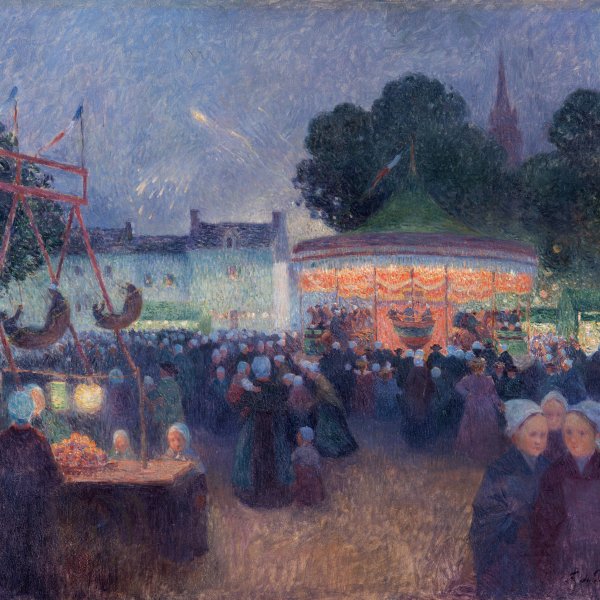Ferdinand Du Puigaudeau
Ferdinand Loyen Du Puigaudeau was born in Nantes on 4 April 1864. The year 1882 marked the beginning of his artistic life. He taught himself to paint, by travelling to Italy and Tunisia. The first of his known works was dated in 1886. In that year he visited Pont-Aven. There, Puigaudeau befriended Charles Laval and Gauguin, with whom he decided to travel to Panama and Martinique. Unfortunately, Ferdinand was unable to join his friends, as he was enlisted. In 1889 he travelled to Belgium, where he met various members of the Groupe des XX. In 1890, he presented one of his works at the Salon of the Société Nationale des Beaux Arts; his father introduced him to the dealer Paul Durand-Ruel who exhibited some of his works. He got married on 7 August 1893 in Saint-Nazaire, and had one daughter: Odette.
In 1895 he settled down in Pont-Aven for three years, and was often in the company of the American painters Harrisson and Childe Hassam. He drew inspiration from roundabouts and country fairs for some of his most beautiful paintings. In 1897 Degas bought one of his Fireworks through the dealer Durand-Ruel, an event which marked the beginning of a friendship between the two artists. That same year he travelled to the south of France. Towards 1899-1900, Puigadeau's family moved to Sannois, near Paris. 1903 was the year of his first personal exhibition at the Galerie des Artistes Modernes, and his break-up with Durand-Ruel.
Puigaudeau travelled to Venice in 1904, where he produced over fifty paintings on that subject. When he returned to France, the exhibition he had been planning fell through. Impoverished, Puigaudeau had to leave Paris. He moved to the village of Bourg de Batz, in Loire Atlantique, where some friends lent him a villa. He recovered, found a new dealer in Nantes (Préaubert), and exhibited his works in various regional Salons.
In 1907, Puigaudeau rented the manor of Kervaudu, and settled down definitively on the peninsula of Guérande. In 1913 he took part in the foundation of the artistic group of Saint-Nazaire. The Great War of 1914 isolated him from the rest of the world. Degas himself called him the hermit of Kervaudu due to his secluded and solitary existence. In 1919 he began to prepare an exhibition in New York, and worked on it for four years, but it was cancelled at the last minute. This failure had terrible repercussions on him-the painter fell into a state of depression and alcohol abuse. In 1924 he illustrated the novel La Brière, by Alphonse de Chateaubriant. He died on 19 September 1930, surrounded by his wife and daughter.
Antoine Laurentin





